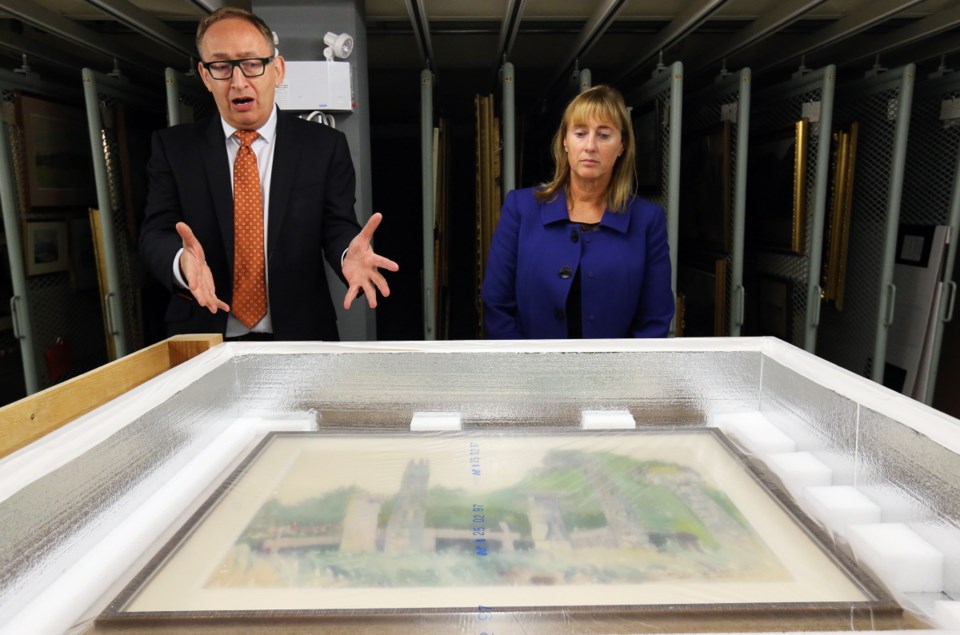Under low ceilings and fluorescent lights, about 1,100 works by Emily Carr have spent much of their lives in a storage vault at the Royal B.C. Museum, down the hall from stacks of archival material and historic maps.
Soon, 25 of those paintings and sketches will leave the museum’s concrete basement for the first major British show of Carr’s work.
The exhibition at South London’s Dulwich Picture Gallery, running Nov. 1 to March 8, is expected to draw international attention to the Victoria artist who is beloved in Canada, museum CEO Jack Lohman said.
“Like all Canadian artists, she needs to be better known. The fact that she’s on at one of the most significant national museums in London means she is going to be very well known after this,” he said.
Lohman, who has had a long professional relationship with the Dulwich, estimated about a million visitors would see the works over the course of six months.
From the Forest to the Sea — Emily Carr in British Columbia will feature Carr artwork borrowed from public and private collections all over the world. Locally, the Art Gallery of Greater Victoria will lend seven pieces and the University of Victoria’s Legacy Art Gallery will lend two.
The show is curated by Ian Dejardin, director of the Dulwich, and Toronto-based art critic Sarah Milroy. It is co-presented by the Art Gallery of Ontario.
The Royal B.C. Museum is a principal lender. It is home to the largest collection of Carr’s work, including paintings and sketches, as well as journals and notebooks that put her work in context.
“It’s that documentary aspect of our collection that makes it foundational for anyone doing research on Emily Carr,” said Kathryn Bridge, deputy director of the museum
The process of preparing the works has taken eight to nine months, she said. The paintings are examined and cleaned by conservators, sealed in layers of plastic and placed in custom-cut foam so they don’t wiggle in transit.
“When you think about it, you can’t just put it under your arm and get on the plane,” Bridge said. “We’ve got B.C.’s treasures here, so we take the utmost care.”
The largest and most important work being shipped from the museum is Tanoo, QCI (1913), depicting an abandoned village on Haida Gwaii. Carr bucked trends by taking a six-week trip by herself to sketch the totem poles there. Her diaries reveal that she believed First Nations art and culture were threatened and she had a responsibility as an artist to document it, Bridge said.
Carr had studied in England and France the year before and brought a post-Impressionist influence to the work.
Lending and borrowing artifacts is not uncommon at the museum. In the past year, the museum has loaned works to 23 institutions, from Prague to Quingdao. Talks are underway with partners in Colombia and China to work on a travelling exhibition about the Gold Rush for 2015.
Lohman said sharing material is a chance to boost the profile of both the museum and province as a tourist destination.
“These are brilliant ambassadors for British Columbia,” Lohman said. “Not only are we ensuring that our works get seen, but we also recognize that much of our public is international now.”



